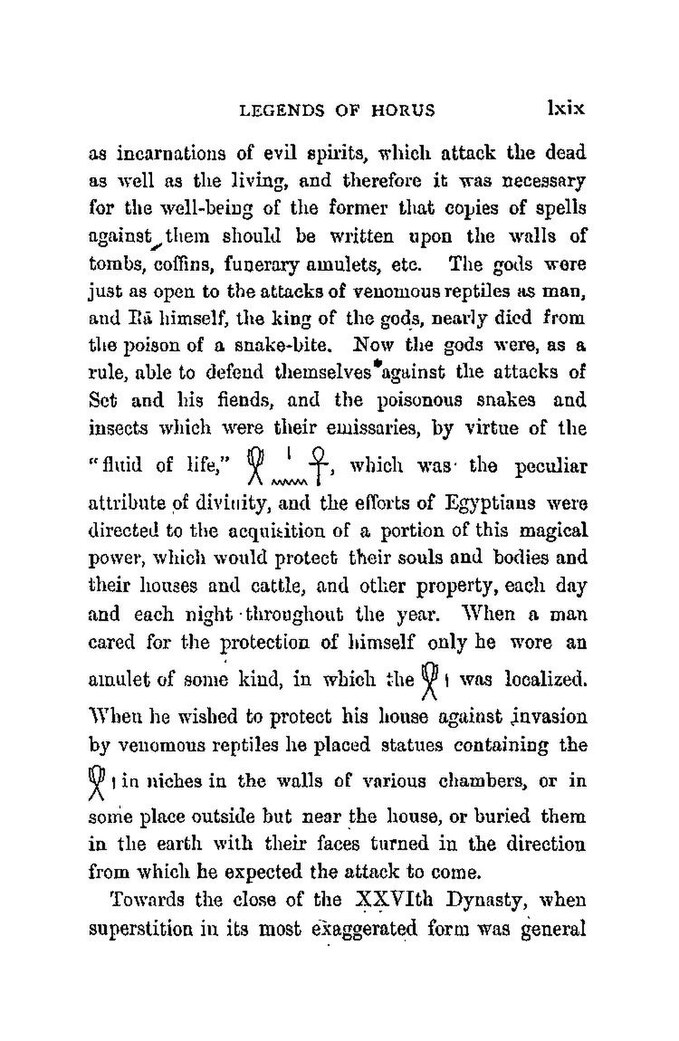as incarnations of evil spirits, which attack the dead as well as the living, and therefore it was necessary for the well-being of the former that copies of spells against them should be written upon the walls of tombs, coffins, funerary amulets, etc. The gods were just as open to the attacks of venomous reptiles as man, and Rā himself, the king of the gods, nearly died from the poison of a snake-bite. Now the gods were, as a rule, able to defend themselves against the attacks of Set and his fiends, and the poisonous snakes and insects which were their emissaries, by virtue of the “fluid of life,”
| |
which was the peculiar attribute of divinity, and the efforts of Egyptians were directed to the acquisition of a portion of this magical power, which would protect their souls and bodies and their houses and cattle, and other property, each day and each night throughout the year. When a man cared for the protection of himself only he wore an amulet of some kind, in which the
| |
was localized. When he wished to protect his house against invasion by venomous reptiles he placed statues containing the
| |
in niches in the walls of various chambers, or in some place outside but near the house, or buried them in the earth with their faces turned in the direction from which he expected the attack to come.
Towards the close of the XXVIth Dynasty, when superstition in its most exaggerated form was general
